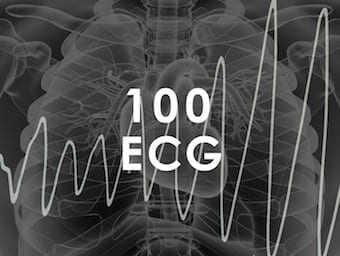
Bloody Diarrhoea
Dysentery (bloody diarrhoea) is usually associated with fever but this is not always the case. Shigella aetiology, differential and management

Dysentery (bloody diarrhoea) is usually associated with fever but this is not always the case. Shigella aetiology, differential and management

Acquired fibrous degeneration of the left and right bundle branches, eventually manifesting as permanent complete atrioventricular (AV) dissociation with cardiac pauses and Adams-Stokes attacks

Lown–Ganong–Levine syndrome (LGL): Proposed pre-excitation syndrome. Accessory pathway composed of James fibres.

Salim Rezaie, Teaching Co-op - Teaching teachers about teaching; lets get super-meta. Alcatraz, Copenhagen, Melbourne, Manchester, Manila

Welcome to the 339th LITFL Review! Your regular and reliable source for the highest highlights, sneakiest sneak peeks and loudest shout-outs from the webbed world of emergency medicine and critical care. Each week the LITFL team casts the spotlight on…

Friedrich Daniel von Recklinghausen (1833 - 1910) was a German pathologist. Eponymously affiliated with von Recklinghausen disease (neurofibromatosis NF-1); von Recklinghausen tumor (adenoleiomyofibroma); and von Recklinghausen canals (lymphatic canaliculi).

Neurofibromatosis (NF) is the term used to describe a group of genetic disorders primarily affecting the cell growth of neural tissues. Neurofibromatosis type 1 (NF1) is a neurodermal dysplasia, previously known as von Recklinghausen disease. (1882)

Emergency Musical Interlude: Class of 2016 (HMS/HSDM) parody of The Fox by Ylvis - what does the spleen do?

René Laennec (1781-1826) was a French physician. Laennec invented the stethoscope in 1816 also coined the terms for cirrhosis and melanoma

Palpitations. QRS alternans – due to AVNRT (i.e. electrical phenomenon), not pericardial effusion as normal voltages.

Elderly patient sudden onset chest pain and shortness of breath. Hypoxic (SaO2 82% RA) and hypotensive (80/50). Describe and interpret his ECG

18-year old female with severe traumatic brain injury, ICP 40mmHg. Fluctuating BPs. Describe and interpret her ECG